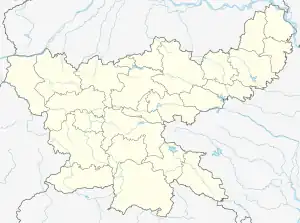| Location | |
|---|---|
 Sijua Area Location in Jharkhand  Sijua Area Sijua Area (India) | |
| State | Jharkhand |
| Country | India |
| Coordinates | 23°47′37″N 86°19′53″E / 23.7935°N 86.3315°E |
| Production | |
| Products | Coking coal |
| Owner | |
| Company | Bharat Coking Coal Limited |
| Website | http://www.bcclweb.in/ |
| Year of acquisition | 1971-72 |
Sijua Area is one of the 12 operational areas of BCCL located in Dhanbad Sadar subdivision of Dhanbad district in the state of Jharkhand, India.
History
Jharia coalfield first came into the picture in the 19th century. Mining in the early days was carried out through manual and semi-manual methods, causing large scale degradation of land, forests and environment, and resulting in mine fires and subsidence. Most of the mines in the Area have a history from the pre-nationalised era. In 1972, the mines of Jharia coalfield were taken over by BCCL from the erstwhile private owners and were reorganised. Most of the mines in the Area are close to each other.[1]
Geography
U: Underground colliery, O: Open Cast colliery, M: Mixed colliery, W: Washery, S: F: Facility, A: Administrative headquarters
Owing to space constraints in the small map, the actual locations in a larger map may vary slightly
Location
The Sijua Area office is located at 23°47′37″N 86°19′53″E / 23.7935°N 86.3315°E.
The map alongside shows some of the collieries in the Area. However, as the collieries do not have individual pages, there are no links in the full screen map. In the map placed further down, all places marked are linked in the larger full screen map.
The Sijua Area is located 12 km from Dhanbad Junction railway station. Dhanbad-Chandrapura line crosses the area in an east-west direction.[1]
Collieries
Collieries in the Sijua Area are: Mudidih, Bansdeopur, Tetulmari, Sendra Banjora, Kankanee and Nicihitpur.
Mining plan
An overview of the proposed mining activity plan in Cluster V, a group of 7 mines in the Sijua Area, as of 2013, is as follows:[2]
1. Nichitpur colliery with an open cast mine, has a normative production capacity of 0.60 million tonnes per year and a peak production capacity of 0.78 million tonnes per year. It had an expected life of 10 years.
MC: Municipal Corporation, CT: Census Town, N: Neighbourhood, R: Rural/ Urban centre
Owing to space constraints in the small map, the actual locations in a larger map may vary slightly
2. Tentulmari colliery has an open cast mine and an underground mine. It has a normative production capacity of 0.795 million tonnes per year and a peak production capacity of 1.033 million tonnes per year. It had an expected life of over 30 years.
3. Mudidih colliery has an open cast mine and an underground mine. It has a normative production capacity of 1.553 million tonnes per year and a peak production capacity of 2.019 million tonnes per year. It had an expected life of over 30 years.
4. Sendra Bansjora colliery with an open cast mine has a normative production capacity of 0.75 million tonnes per year and a peak production capacity of 0.975 million tonnes per year. It had an expected life of 23 years.
5. Kankanee colliery with an open cast mine has a normative production capacity of 0.48 million tonnes per year and a peak production capacity of 0.624 million tonnes per year. It had an expected life of over 30 years.
6. Bansdeopur colliery with an open cast mine has a normative production capacity of 0.676 million tonnes per year and a peak production capacity of 0.879 million tonnes per year. It had an expected life of over 30 years.
7. Bansdeopur colliery with an underground mine is closed for production.
References
- 1 2 "Sijua Area". Bharat Coking Coal Limited. Retrieved 19 June 2019.
- ↑ "Proposal for Amendment in Environmental clearance" (PDF). Cluster V. Bharat Coking Coal Limited. Retrieved 19 June 2019.